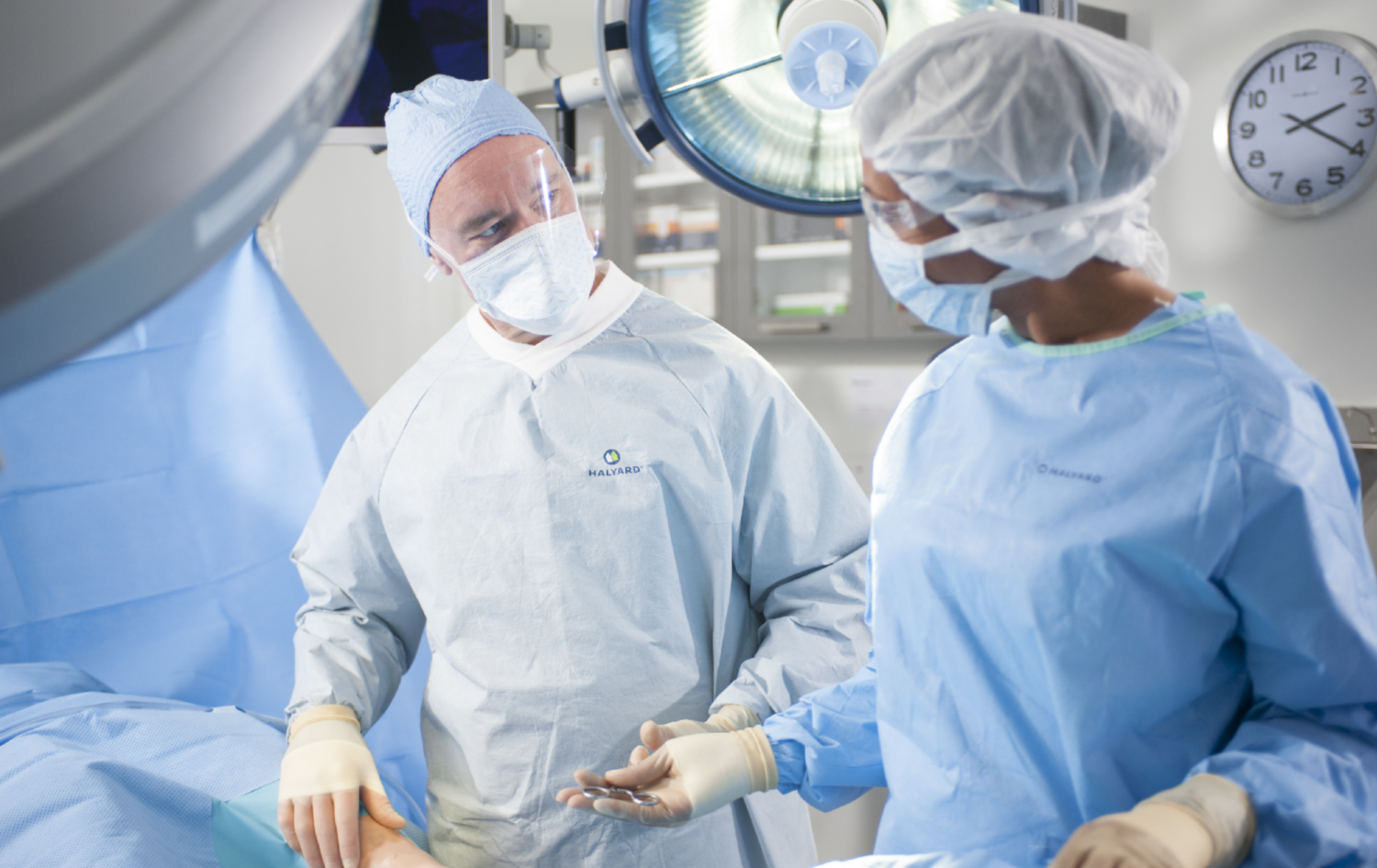As with any profession, healthcare workers need to be mindful of their own safety. While that priority can occasionally be obscured by the appropriate focus on all the measures taken to preserve the health of patients, a hospital is an environment fraught with possible dangers for those that work there. The situation is especially true in and around the OR.
Luckily, manufacturers such as Halyard Health have been rigorous in developing and enhancing material meant to keep practitioners as a safe as their patients. Ongoing success in that realm undoubtedly was a major motivating factor in the announced plans for Owens & Minor to buy the portion of Halyard’s business that specializes in surgical products and infection prevention.
To learn more about the protective materials offered by the company, Surgical Products spoke with Alex Hodges, vice president and general manager of Halyard Health’s surgical and infection prevention division.
What do you think are some of the most overlooked areas in the realm of protecting staff safety in healthcare facilities?
We don’t believe that clinicians are as aware as they should be on what the right level of protection is to keep them safe from infections, whether it’s surgical gowns and their knowledge of the different AAMI ratings — AAMI Level 3 and AAMI Level 4 — or face masks and ASTM levels. So we’re developing educational efforts, delivering the message that practitioners need different levels of protection and different standards depending on the level of fluid intensity and the risk profile of the patient.
The primary difference between an AAMI Level 3 and AAMI Level 4 product is that an AAMI Level 4 gown also offers protection from viruses. That’s why the AERO CHROME* Breathable Performance Surgical Gown has some visual cues and differences to make it easier for clinicians to identify when they need AAMI Level 4 protection. It not only keeps them comfortable and protected, but clinicians can visually distinguish the gown because of its unique color, which helps them determine it’s the one they want to wear for a particular type of procedure.
How important is it to develop products with that sort of immediate clarity?
Patients present themselves with risks to clinicians in a way that obviously isn’t a one-size-fits-all proposition. Through education and visual cues with our products, we’re making it easier for clinicians.
At the end of the day, different gowns are needed for different types of cases. So we’re trying to deliver ease of selection, but also not oversimplify it, because we don’t think it’s a one-size-fits-all scenario.
Does this approach also address problems with physician burnout?
When surgeons think about the things that they’ve got to go to bat for in their hospital and the natural tension between them and the folks in the materials management department, gowns and masks might not be the first priority on the list. We’re trying to make sure the story is just as compelling to materials management, so they see the value in, for instance, purchasing a two-gown system of AERO BLUE* and AERO CHROME* Performance Surgical Gowns. The surgeon doesn’t necessarily have to be the one who goes to bat for us. We’ve got a very compelling case for our two-gown system. Facilities can see reductions of up to 40 percent of the type of gowns they carry today. That’s a compelling case for materials management.
We’re also very proud of the fact that we source our products from North America. That means it’s a much easier supply chain story for hospitals. We can take over a lot of the supply chain needs. The number of weeks of inventory that a hospital has to carry is reduced because they don’t have to deal with suppliers that may be coming from overseas and the product may be 10-12 weeks on the water. We can respond more quickly to surgeons’ demands and supply chain needs.

(Image credit: Halyard Health)
Does that help to get everyone in the hospital on the same page when it comes to supply decisions?
We’re trying to make sure everybody’s educated — that it is easy to select the right level of protection that’s needed — but it’s also really a win-win for both the surgeons and the materials group within a hospital. We’re trying to have that same message go out across those two constituencies.
What kind of feedback have you gotten from users?
There’s a particular surgeon who used our AERO BLUE gown. For this individual, the benefit was around comfort and staying cool, within generally very rigorous surgeries, in plastics. He’s constantly battling with his staff about the room temperature. The nurses often are freezing, while surgeons, who are at the front lines doing all the manipulation through the surgical procedures are too hot. This gown, which is made with the same material and fabric as the AERO CHROME gown, keeps that surgeon cool. And he’s been a huge advocate for it.
Besides gowns, what personal protective equipment should healthcare professionals focus on?
Face masks are a critical piece of personal protective equipment. Both surgeons and nurses may not be aware that not all face masks offer the same level of fluid protection. Over 50 percent of users have experienced blood on their face at certain times. We want to bring that number down and be sure they’re choosing the right face mask.




